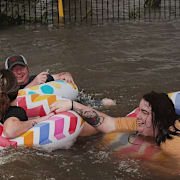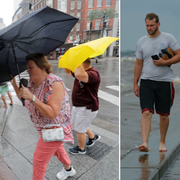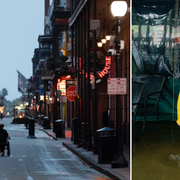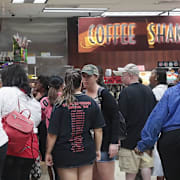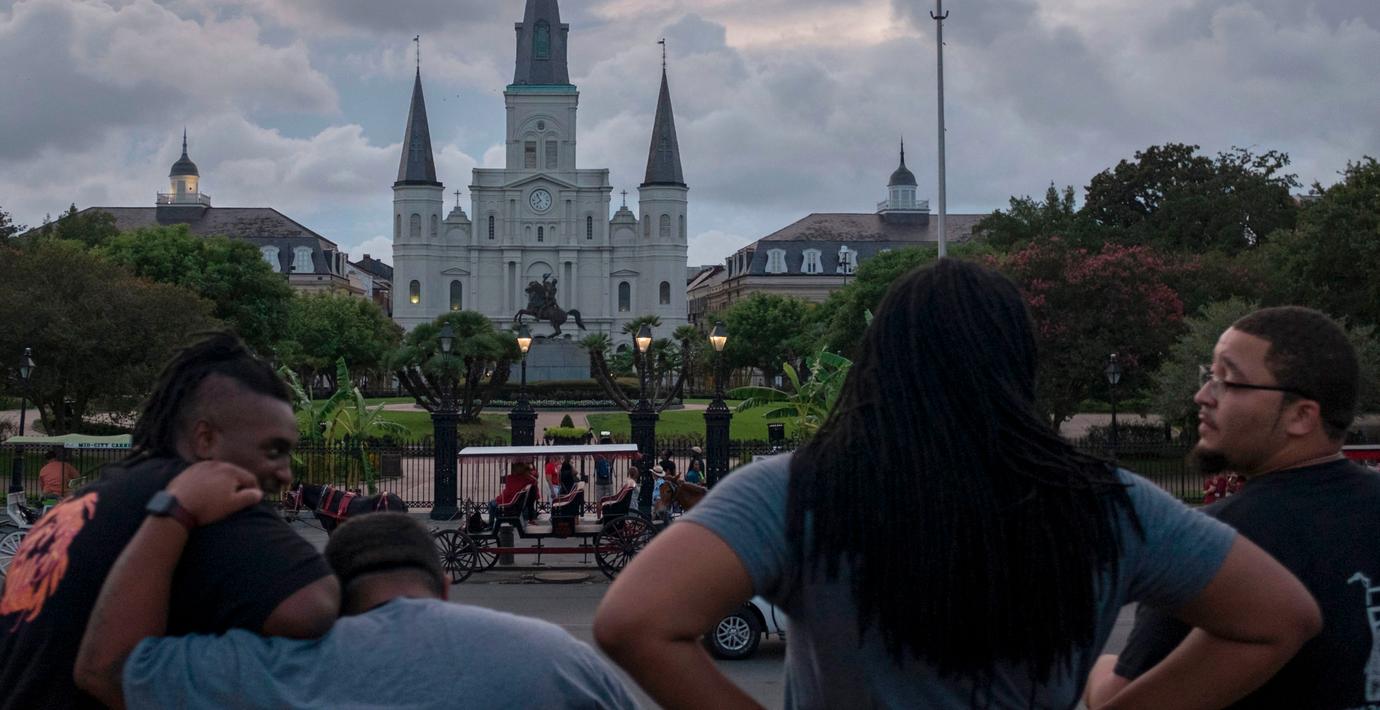
Tropiska stormen Barry närmar sig New Orleans
Den tropiska stormen Barry är på väg mot delstaten Louisiana i USA som har utlyst nödläge, rapporterar amerikanska medier och myndigheter. Stormen väntas nå land innan helgen och stora mängder regn kan skapa stor förstörelse. Människor uppmanas att evakuera från delar av New Orleans.
Översvämningar har redan kommit under veckan och Barry kan växa till en orkan innan den når land. För New Orleans blir det ett test av nya säkerhetsåtgärder sedan staden drabbades av orkanen Katrina år 2005, då runt 1 500 personer dog.
bakgrund
Katrina år 2005
Wikipedia (en)
As the center of Hurricane Katrina passed southeast of New Orleans on August 29, 2005, winds downtown were in the Category 1 range with frequent intense gusts and tidal surge. Hurricane-force winds were experienced throughout the city, although the most severe portion of Katrina missed the city, hitting nearby St. Bernard and Plaquemines parishes. Hurricane Katrina made its final landfall in eastern St. Tammany Parish. The western eye wall passed directly over St. Tammany Parish, Louisiana as a Category 3 hurricane at about 9:45 am Central Time, August 29, 2005. The communities of Slidell, Avery Estates, Lakeshore Estates, Oak Harbor, Eden Isles and Northshore Beach were inundated by the storm surge that extended over six miles inland. The storm surge affected all 57 miles (92 km) of St. Tammany Parish's coastline, including Lacombe, Mandeville and Madisonville. The storm surge in the area of the Rigolets Pass was estimated to be 16 feet, not including wave action, declining to 7 feet (2.1 m) at Madisonville. The surge had a second peak in eastern St. Tammany as the westerly winds from the southern eye wall pushed the surge to the east, backing up at the bottleneck of the Rigolets Pass.
In the City of New Orleans, the storm surge caused approximately 23 breaches in the drainage canal and navigational canal levees and floodwalls. As mandated in the Flood Control Act of 1965, responsibility for the design and construction of the city's levees belongs to the United States Army Corps of Engineers and responsibility for their maintenance belongs to the Orleans Levee Board. The failures of levees and floodwalls during Katrina are considered by experts to be the worst engineering disaster in the history of the United States. By August 31, 2005, 80% of New Orleans was flooded, with some parts under 15 feet (4.6 m) of water. The famous French Quarter and Garden District escaped flooding because those areas are above sea level. The major breaches included the 17th Street Canal levee, the Industrial Canal levee, and the London Avenue Canal floodwall. These breaches caused the majority of the flooding, according to a June 2007 report by the American Society of Civil Engineers. The flood disaster halted oil production and refining which increased oil prices worldwide.
Between 80 and 90 percent of the residents of New Orleans were evacuated before the hurricane struck, testifying to some of the success of the evacuation measures. Despite this, many remained in the city, mainly those who did not have access to personal vehicles or who were isolated from the dissemination of news from the local governments. The Louisiana Superdome was used to house and support some of those who were unable to evacuate. Television shots frequently focused on the Superdome as a symbol of the flooding occurring in New Orleans.
The disaster had major implications for a large segment of the population, economy, and politics of the entire United States. It has prompted a Congressional review of the Army Corps of Engineers and the failure of portions of the federally built flood protection system which experts agree should have protected the city's inhabitants from Katrina's surge. Katrina has also stimulated significant research in the academic community into urban planning, real estate finance, and economic issues in the wake of a natural disaster.
New Orleans, Louisiana
Omni är politiskt obundna och oberoende. Vi strävar efter att ge fler perspektiv på nyheterna. Har du frågor eller synpunkter kring vår rapportering? Kontakta redaktionen
